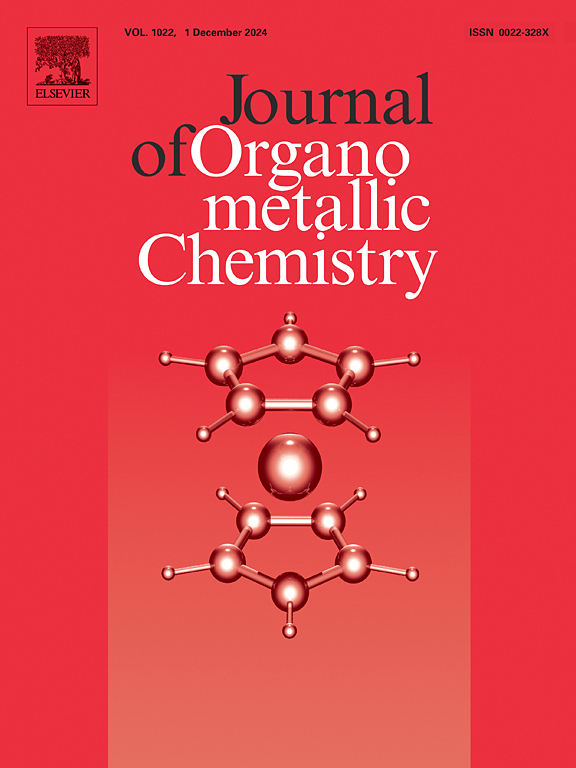磁性壳聚糖负载金纳米颗粒的设计与合成及其在Suzuki-Miyaura偶联反应中的应用
IF 2.1
3区 化学
Q3 CHEMISTRY, INORGANIC & NUCLEAR
引用次数: 0
摘要
本研究描述了以金纳米粒子(Au NPs)修饰的磁性壳聚糖生物膜的可持续合成,并对其催化活性进行了深入分析。磁性壳聚糖生物聚合物被设计成一种环保的封盖剂,可以有效地结合和稳定石榴汁中还原的金离子。利用分析工具、XRD、SEM、TEM、FTIR等相关方法对合成的Au NPs@CS-Fe3O4的理化性质进行了评价和表征。此外,还对Au NPs@CS-Fe3O4在Suzuki-Miyaura偶联(SMC)反应中合成联苯衍生物的催化性能进行了评价。该纳米催化剂表现出优异的可重复使用性,在9次循环后保持其活性,并且减少了最小的实施量。本文章由计算机程序翻译,如有差异,请以英文原文为准。

Design and synthesis of magnetic chitosan-supported gold nanoparticles and evaluating its usage in the Suzuki-Miyaura coupling reactions
This study describes the sustainable synthesis of a magnetic chitosan biofilm decorated with gold nanoparticles (Au NPs), following an in-depth analysis of its catalytic activity properties. The magnetic chitosan biopolymers were designed to serve as an environmentally friendly capping agent, effectively binding to and stabilizing gold ions, which were reduced using Pomegranate juice. Analytical tool, XRD, SEM, TEM, FTIR and other pertinent methods were used to assess and characterize the physicochemical properties of the synthesized Au NPs@CS-Fe3O4. In addition, the catalytic performance of the Au NPs@CS-Fe3O4 was appraised in Suzuki-Miyaura coupling (SMC) reactions for the synthesis of biphenyl derivatives. The nanocatalyst exhibited excellent reusability, maintaining its activity after >9 cycles with minimal reduction in implementation.
求助全文
通过发布文献求助,成功后即可免费获取论文全文。
去求助
来源期刊

Journal of Organometallic Chemistry
化学-无机化学与核化学
CiteScore
4.40
自引率
8.70%
发文量
221
审稿时长
36 days
期刊介绍:
The Journal of Organometallic Chemistry targets original papers dealing with theoretical aspects, structural chemistry, synthesis, physical and chemical properties (including reaction mechanisms), and practical applications of organometallic compounds.
Organometallic compounds are defined as compounds that contain metal - carbon bonds. The term metal includes all alkali and alkaline earth metals, all transition metals and the lanthanides and actinides in the Periodic Table. Metalloids including the elements in Group 13 and the heavier members of the Groups 14 - 16 are also included. The term chemistry includes syntheses, characterizations and reaction chemistry of all such compounds. Research reports based on use of organometallic complexes in bioorganometallic chemistry, medicine, material sciences, homogeneous catalysis and energy conversion are also welcome.
The scope of the journal has been enlarged to encompass important research on organometallic complexes in bioorganometallic chemistry and material sciences, and of heavier main group elements in organometallic chemistry. The journal also publishes review articles, short communications and notes.
 求助内容:
求助内容: 应助结果提醒方式:
应助结果提醒方式:


